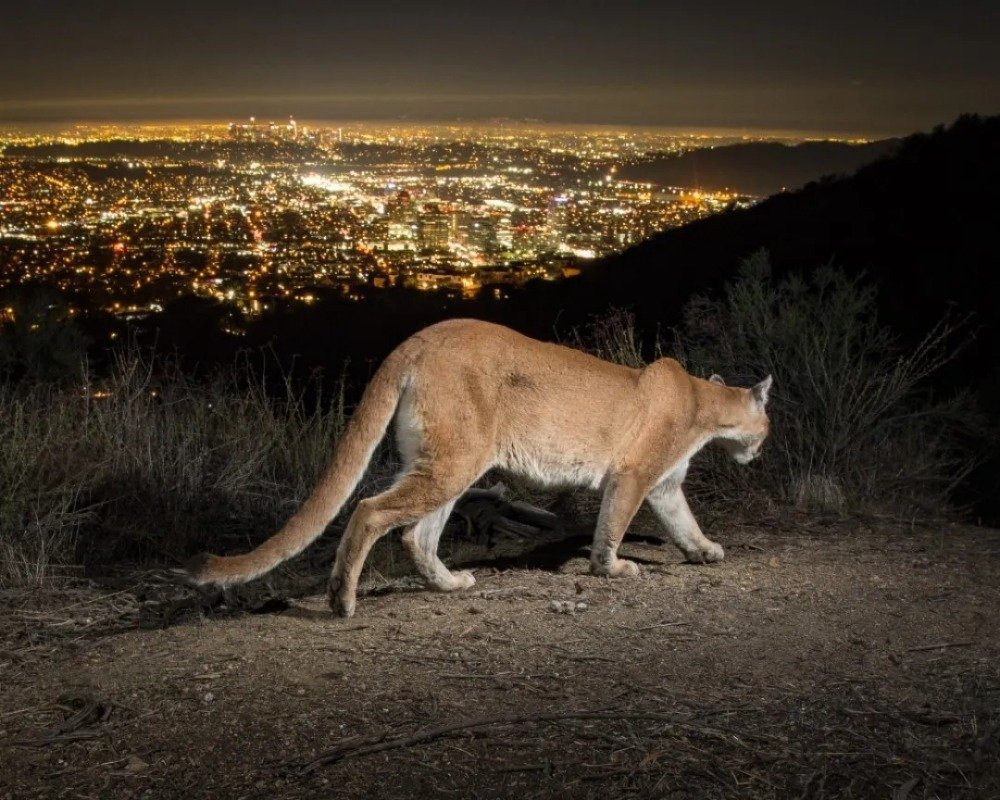As part of the Santa Monica Mountains, Monte Nido is home to thousands of species of wildlife, animals, and plants, including mountain lions, bobcats, coyotes, foxes, hawks, owls, frogs, deer, rabbits, snakes, lizards, and so many more. Below is part of an evolving guide on how to peacefully co-exist with the biodiversity that makes Monte Nido a special home for all.
Coexisting with Mountain Lions
The Monte Nido Valley Community Association (MNVCA) invited the Cougar Conservancy to a community meeting to share information on coexisting with cougars. Their mission is to reduce human-wildlife conflict and conserve cougar populations through science-based management and conservation.
They provided resources that residents can use to properly inform themselves on coexistence practices. Below is a video of the presentation.
There are multiple ways for the Monte Nido community to report an incident or submit a cougar observation to the Cougar Conservancy. Visit cougarconservancy.org/assistance, email director@cougarconservancy.org, or call the Cougar Conflict Hotline at 1-800-930-1087. These reports are essential to ongoing research and conflict mitigation efforts.
Here are some electronic copies of some of Cougar Conservancy's resources:
You can also find helpful videos on the Cougar Conservancy YouTube Channel. Please share with friends, family, and neighbors. They can also be easily posted to social media, Nextdoor, and other online platforms. Here are a few samples below:
Conflict Hotline: How to report an incident or sighting
*Info provided by Cougarconservancy.org
Facts & Figures:
The National Park Service has studied 99 mountain lions in and around the Santa Monica Mountains.
The major causes of death among study animals is vehicle collisions, rodenticide poisoning, and intraspecific strife (mountain lions killing other mountain lions).
A total of 24 mountain lions have been struck and killed by vehicles in the study area since 2002.
A typical home range is around 150 square miles for adult males and 50 square miles for adult females in our region.
Mountain lions typically eat about one deer per week, along with other smaller prey as the opportunity arises. NPS researchers have analyzed more than 700 kills, of which 87% were mule deer (the second-most common prey was coyotes and then raccoons).
28 of 29 mountain lions have tested positive for exposure to one or more anticoagulant rodenticides (rat poison) and seven have died directly of poisoning.
Safety:
Mountain lions are solitary, elusive animals and sightings are extremely rare. Based on more than 250,000 GPS locations collected since 2002, it is clear that mountain lions prefer natural areas and attempt to avoid coming in contact with humans.
If you do encounter a mountain lion, make yourself appear as large and intimidating as possible by yelling, waving your arms, and even throwing objects in the direction of the animal. Slowly back away and allow space for the mountain lion to move away. Do not turn your back and run.
Consider these mountain lion safety tips while living or recreating in mountain lion country.
The California Department of Fish & Wildlife is responsible for managing mountain lions in the state of California and determining when a mountain lion is a threat to public safety.
*Fact & Figures and Safety info provided by NPS.gov
Photo by Johanna Turner
Below is some useful guidance from The National Park Service, the Cougar Conservancy, and UCLA Institute of the Environment and Sustainability:
Advice From the National Park Service:
Keep children and animals supervised/protected until the animal loses interest and leaves. The loss of interest will also protect the lion.
Affix chicken wire or equivalent material to an existing animal enclosure. This is not considered development and therefore does not require a coastal development permit. New structures can be approved with a Local Coastal Program Conformance Review.
Confine livestock such as sheep, goats, llamas, pigs, chickens, and other fowl in completely secured and covered enclosures, particularly at night.
Use properly trained livestock guard animals if you have a large yard in a relatively remote area.
Install an electric fence around areas where livestock or domestic animals are kept.
Keep dogs and cats indoors, especially after dusk and before dawn, to prevent them from becoming prey for mountain lions and other wild animals.
Keep pet food indoors. If you feed animals outside, gather up the food and water bowls and clean up spilled food so as not to attract wild animals.
Install a fully secure, roofed kennel if you must keep pets outside.
Advice From the Cougar Conservancy
VIDEO RESOURCES:
VIDEO: What a cougar sounds like
VIDEO: How to report an incident or sighting. Their hotline number is 1-800-930-1087
VIDEO: Protecting pets
VIDEO: Trail safety
VIDEO: Trail safety in 60 seconds
Advice from UCLA Institute of the Environment & Sustainability

